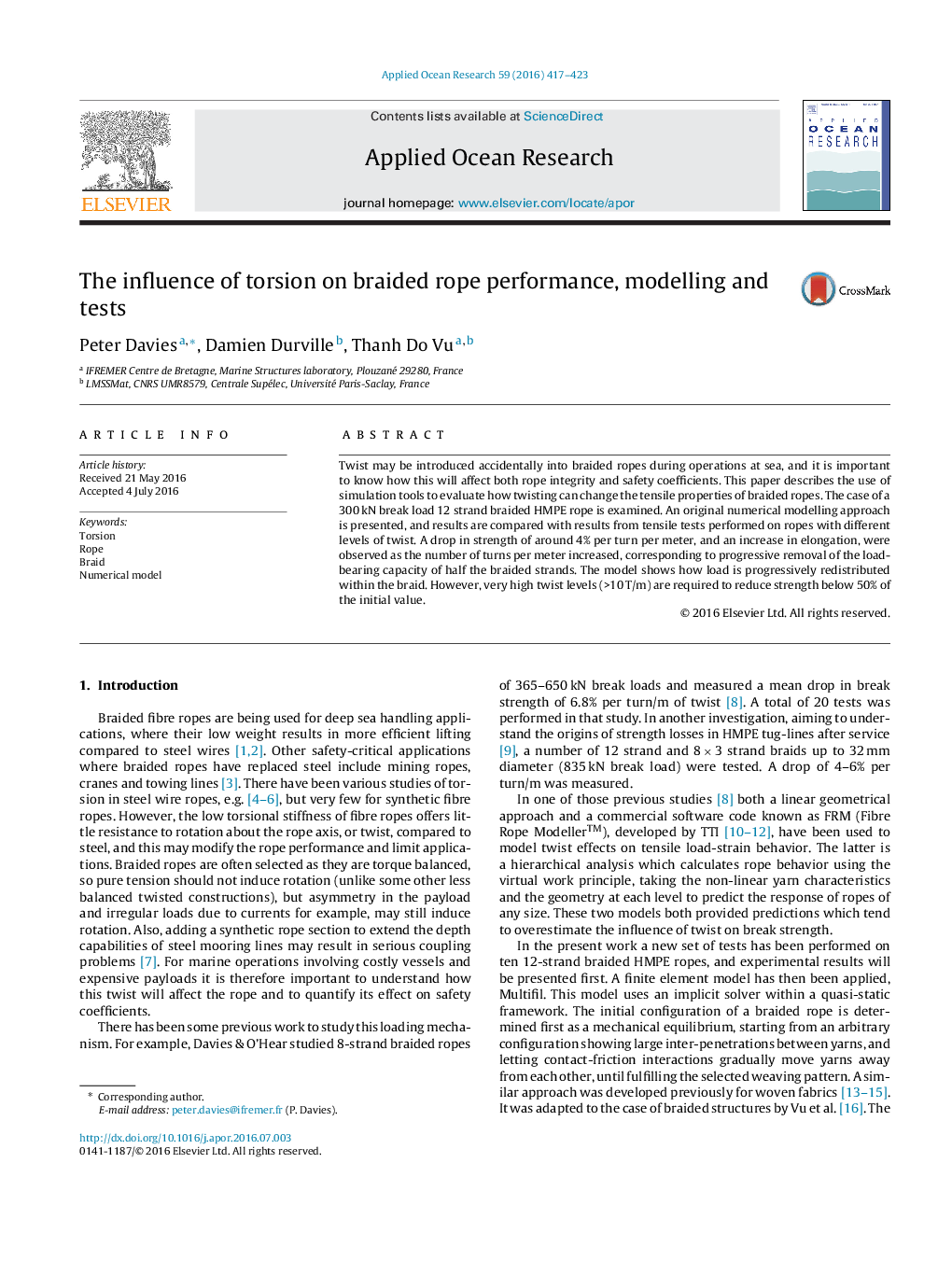| Article ID | Journal | Published Year | Pages | File Type |
|---|---|---|---|---|
| 1719791 | Applied Ocean Research | 2016 | 7 Pages |
•New experimental data are presented from tests on 12 strand braided HMPE ropes.•A new finite element model has been developed to simulate the effect of twist on both braid geometry and mechanical behavior under tensile loading.•This model provides a reasonable prediction of load-strain plots for a range of twist levels up to 5 turns/m.•Analysis of these results and published data has provided values from over 40 tests on 8- and 12- strand braided ropes, which indicate a mean loss in residual strength of around 5% per turn per meter.
Twist may be introduced accidentally into braided ropes during operations at sea, and it is important to know how this will affect both rope integrity and safety coefficients. This paper describes the use of simulation tools to evaluate how twisting can change the tensile properties of braided ropes. The case of a 300 kN break load 12 strand braided HMPE rope is examined. An original numerical modelling approach is presented, and results are compared with results from tensile tests performed on ropes with different levels of twist. A drop in strength of around 4% per turn per meter, and an increase in elongation, were observed as the number of turns per meter increased, corresponding to progressive removal of the load-bearing capacity of half the braided strands. The model shows how load is progressively redistributed within the braid. However, very high twist levels (>10 T/m) are required to reduce strength below 50% of the initial value.
